RIVA DEL PO
Immersed in the countryside of the plane, surrounded by wildlife and waterways, with enchanting natural scenery of the River Po and full of routes and footpaths.
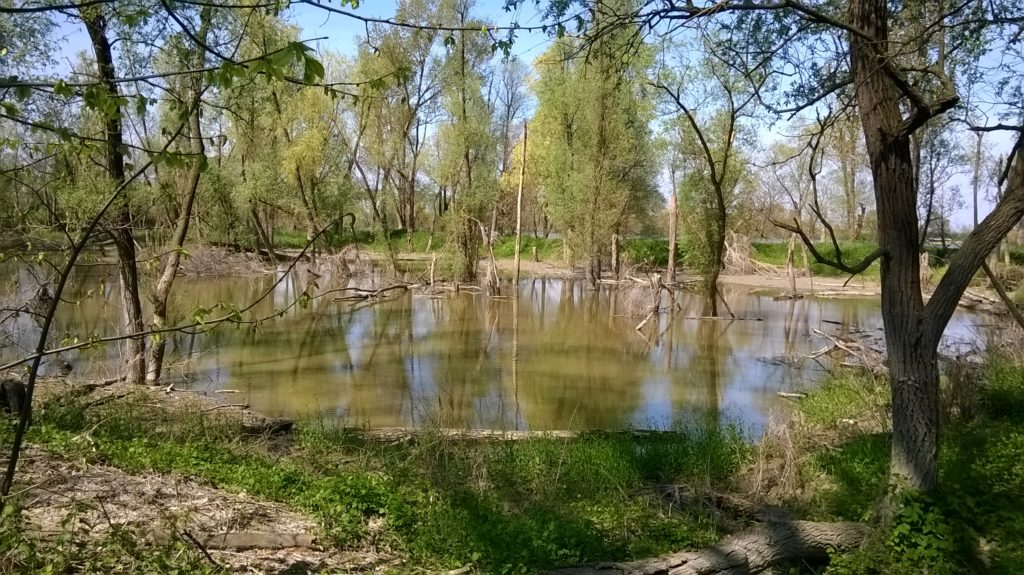
History
The territory originates from the fusion of the Districts of Ro and Berra in 2019. The village of Ro, with its hamlet dating back to the Estense’s period, is situated on the right bank of the River Po and has been flooded many times throughout history.
In olden times the village carried out an important role as border area of the North. During the second world war Ro was chosen as storage for the precious archives of the “Legazione Pontificia” consisting of two and a half centuries of post-Este family history of Ferrara. In 1943 the documents were relocated from the Estense Castle to a building close to the Town Hall. The building unfortunately was bombed in 1945 and a large amount of the archive, that still had not been classified or catalogued, went destroyed.
The economy of the area is still based on cereal production and on a recently expanding tourism: this is an enchanting area, “suspended” between land and water.
The old District of Ro was the birthplace of important cultural figures, such as Vittorio and Elisabetta Sgarbi, and “adopted” the famous writer Riccardo Bacchelli that used the area as setting for his historical novel” Il mulino sul Po”.
The town of Berra was founded in 1908 following the division of the District of Copparo and lies on the banks of the River Po on the border with the Veneto Region.
The origins of Berra are difficult to trace but thanks to some archeological findings in Cologna we can now date it back to Roman times.
For most part of the Middle Ages the town was in the Veneto Region but because of the “Rotta di Ficarolo” ( a disastrous flooding) of 1152 and the following years, the morphology of the land was dramatically altered and Berra was separated from Veneto territories.
In 1194 Berra was handed to the Estense family by Enrico VI (Henry the VI), like most of the land that would later become the District of Ferrara, because of their neutrality during his descent to the Southern part of Italy.
The 27th of October 1597 Alfonso II d’Este died and having no direct heirs Pope Clement VIII annexed the whole Duchy of Ferrara to the Papal State. The Pope did not acknowledge Alfonso, cousin of Cesare d’Este, as successor even though he had been previously been recognized as such by Emperor Rudolf II.
After the napoleonic period the land was returned to the Papal state in 1816 following the restoration of the Congress of Vienna in 1815.
The diocese of Adria had juridical control over the town until the start of the 19th century when it passed under the control of Ravenna. Finally in 1966 Berra became part of the Arch-diocese of Ferrara and Comacchio.
Mulino sul Po (the Mill on the Po) - RO
The “Mulino sul Po” is not only an open air museum, it is a symbol of production of the whole area.
The building is in Ro and is an accurate reconstruction of the original water mills that could be found on the River Po from 1912 onwards, a simple design with two hulls and a single wheel and a grinding stone in working order. From here it’s possible to set off and start discovering the territory and its famous “coppia”(local type of bread).
Inside the Mill visitors can witness the grinding of flour and touch the wholemeal flour with wheat germ used today ,as it was a long time ago, to make “the best bread in the world”.
The building is 12,20 m long and 9,36 m tall and can be reached using the dock on the floodplain of the River Po.
The mill is one of the nineteen “Musei del gusto” ( typical food and produce related museums) of the Emilia Romagna Region.
WE INFORM YOU THAT THE MILL ON THE PO CURRENTLY CANNOT BE VISITED, AS IT IS UNDER MAINTENANCE. AS SOON AS IT WILL BE VISITABLE AGAIN, WE WILL GIVE YOU NOTICE ON THIS SITE.
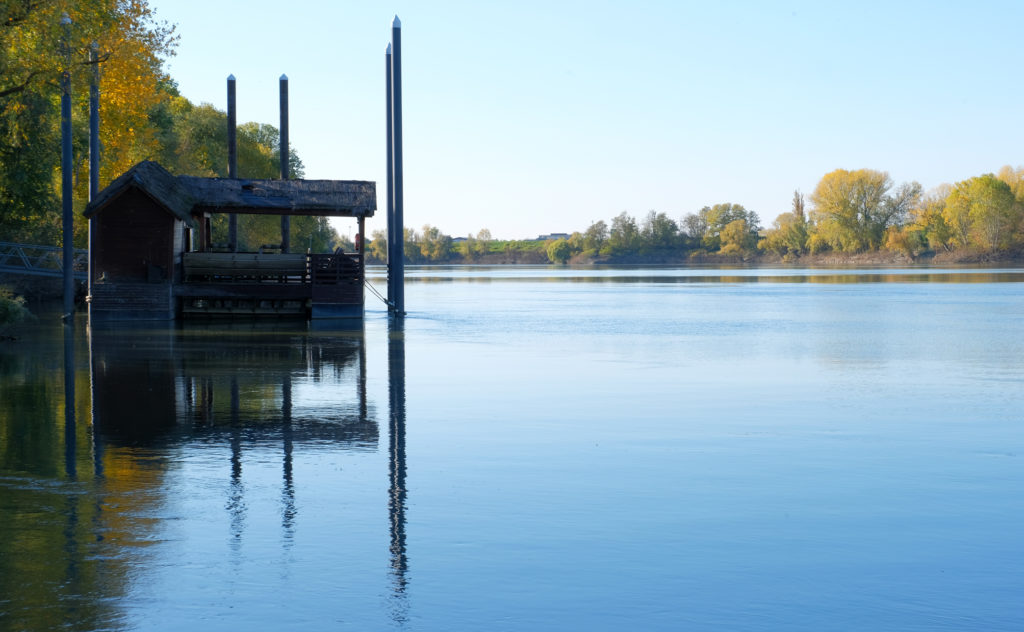
Cultural route of the “Baccheliani” locations
6450 kilometers long and fully integrated with the district cycle routes, this itinerary crosses all the “Bacchelliani” locations. Starting from Ro, where it connects with the famous “Destra Po” cycle route for 17 km and the inter-district “COPPARO-RO” route for 10 km, it continues towards the village of Guarda going past historical and cultural buildings like the “Palazzone” and the “Villazza”, farm experiences for tourists and schools. The area is crossed by a total of 30 km of cycle routes.
The “Luoghi Bacchelliani” have a perfect setting for nesting and resting of migrating birds (web footed and wading ), a natural untouched landscape with an amazing conservation of underwater flora.
The riverside of the “Destra Po”, between Zocca, “il Dazio” and Ro Ferrarese is a perfect example of the particular scenery of the area: the great river bight, the small beaches, the sinuous banks, the short and rich vegetation alternating with the poplar woods. A cycle route runs along the top of the whole embankment of the Po River all the way to the Adriatic Sea. The countryside is spotted with rare and meaningful buildings such as “Villa Saracco” , with its dovecote towers and park, “Villa Scutellari”, comprised of a central structure and two side towers, and “Villa Beicamina”, an elegant manor house with chapel from the 1700’s that can also be found in Riccardo Bacchelli’s “Il mulino del Po”
CHIESA S. GIACOMO
RO FERRARESE
The village of Ro is first mentioned in a papal bull of Pope Martin II of 944 confirming the rights and properties of the Church of Adria. It was in this period (1509) that the epic battle between Venice and Ferrara took place in the area of Ro and Polesella and saw the Estense victorious against the venetian galleys thanks to their powerful cannons. Such an ancient hamlet must have had its own church. We are sure that in 1500 a church did exist, though modest, and that towards the end of the 18th century (1773) this was extended in length and width following the project of the Architect Antonio Foschini and sanctified by the Bishop of Adria Arnaldo Speroni. This is the church we can see today, dedicated to Saint James (San Giacomo), has a post baroque interior and a bell tower that dates back to 1882.
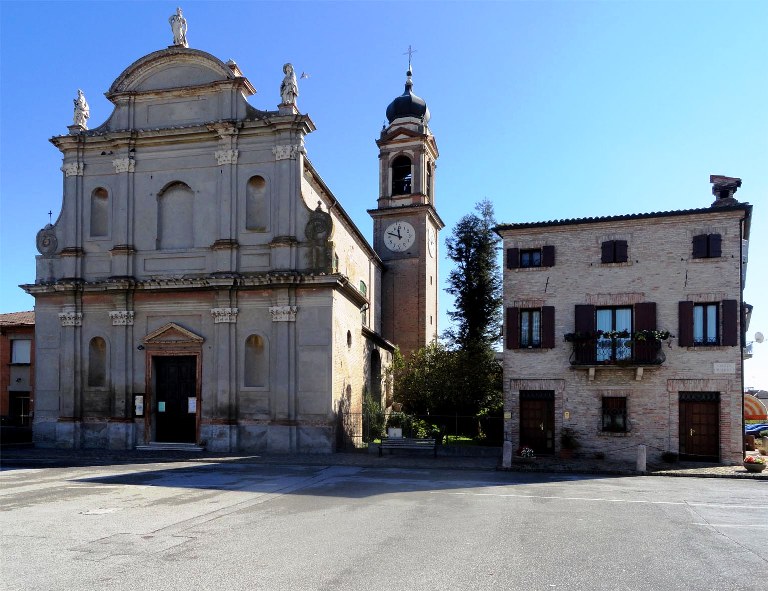
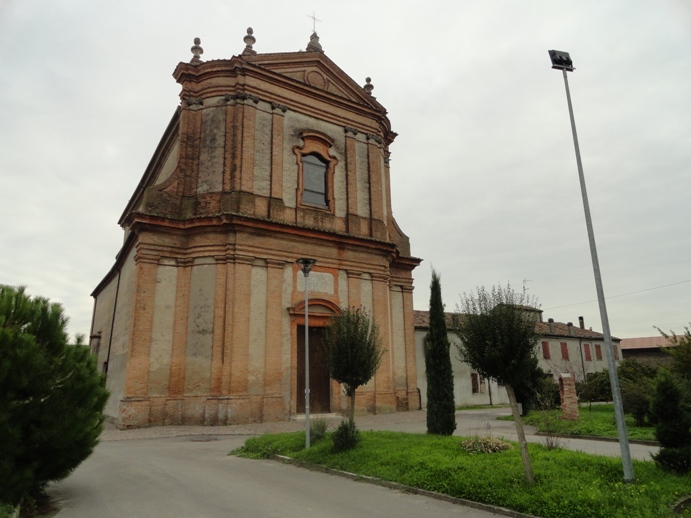
CHIESA DELL'ASSUNZIONE
DELLA SANTISSIMA MARIA
GUARDA FERRARESE
The parochial church is dedicated to the Assumption of the Holy Mary and was erected in the 12th century and finished at the end of the 18th century.
The ceiling is by the Architect Antonio Foschini from Ferrara as we think the entire church might be but there is no proven documentation. The bell tower was part of the previous church that had been demolished due to its precariousness and was substituted by the one we see today. The bell tower was 500 metres away from the church and collapsed in 1945 during the war and was never rebuilt. An interesting aspect of the church is that the façade is directly facing the river. There is also a building dating back to the 19th century of the “Delegation di Guarda”.
COLLEGIO DI RUINA
The “Collegio” and its small church can be seen on the road that leads to Riva del Po coming from Ferrara, on the left bank of the Canal Bianco. Once a holiday resort for the Jesuit boarding school of Ferrara in the 17th century , today we find it in desperate decline. With its rectangular plan and with two orders of windows, a simple doorway dominated by a small balcony made of wrought iron and with french windows. The cornice is made of cotto, decorated in the middle by a cymatium in cotto as well. The Parish with half pilaster facade and triangular gable with central a central body of the church that maintains to this day the original decorative elements.
In the rear there is a dovecote tower and service buildings.
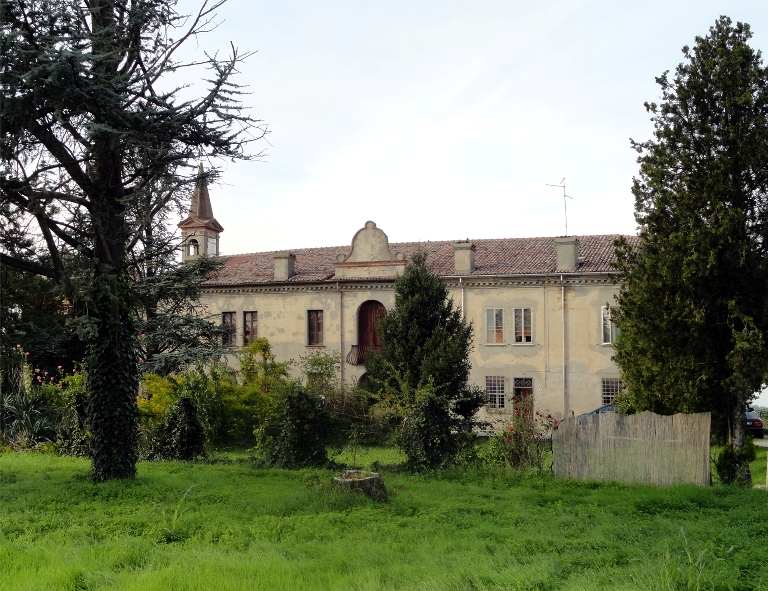
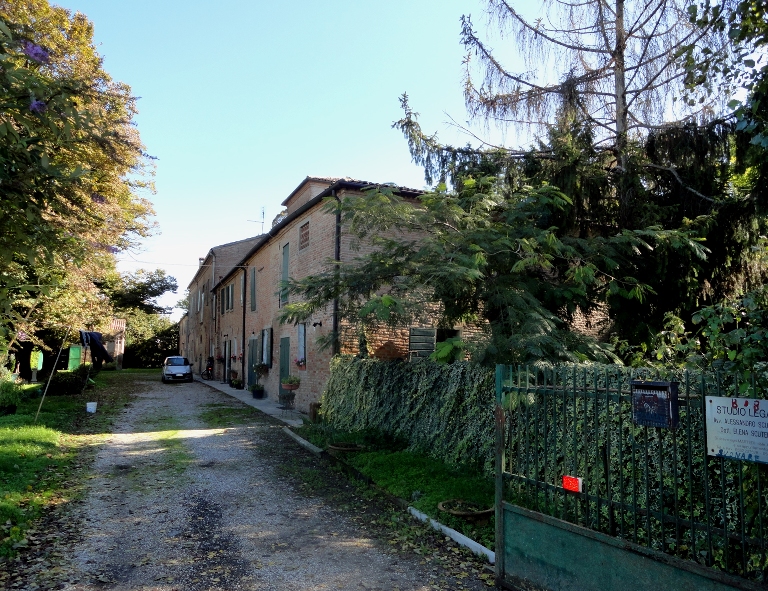
VILLA SCUTELLARI – ZOCCA
Villa Scutellari is situated on the corner between via Po and the via Provinciale di Ro, towards the middle of the village, and is surrounded by a large park full of marble groups.
The building has a central structure on two orders sided by two short quadrangular towers with three orders.
The entrance is decorated by a plastered cotto frame , visible also on the windows. A balcony made of wrought iron decorates the french window. On the façade there is a sundial.
Backed against the property there are two orders that connect to the various other buildings in the rear. This summer manor connected with farming lands can be dated back to the 18th century.
PALAZZO GIGLIOLI - BERRA
The building is situated in a meander of the Po River where in 1450 the Giglioli family had already built a residence with a tower. The appearance of the building we can see today is that of the original structure: rectangular plan, with a horizontal development on two floors and a basement for services with small quadrangular windows for light. The main floor can be reached using the external steps in the centre of the façade, added during the renovations done at the start of the 1800’s together with the substitution of the ancient tower with the cymatium aedicule and the addition of lintels to the windows of the first floor. The interior is embellished with frescos and decorations of Rosa Giglioli. Unfortunately the building today is in a state of abandon and neglect.
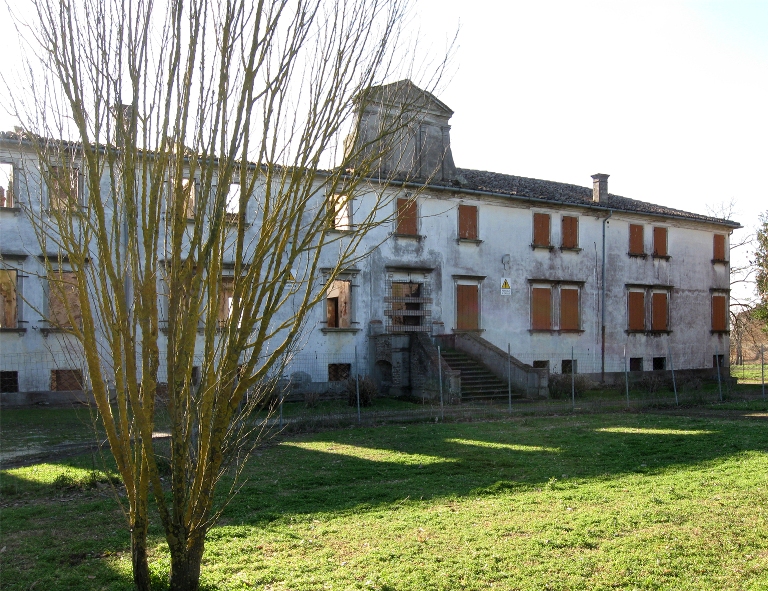
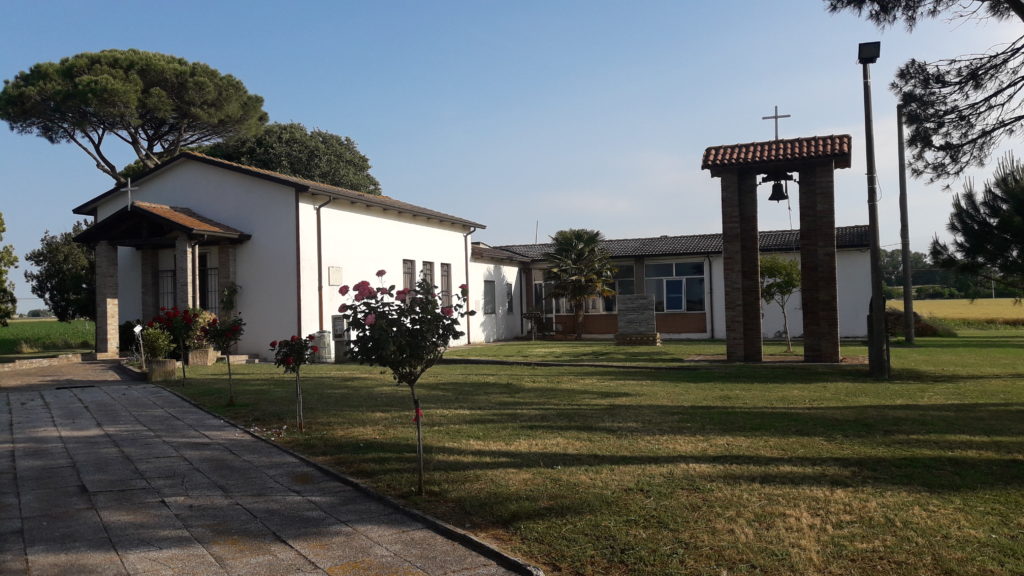
SANTUARIO DELLA GALVANA - BERRA
A small building with a simple hut plan that can be found on the road to Ariano. Here you can admire a picture of the Holy Mary holding Baby Jesus from the 17th century. Tradition has it that it was found a few hundred years ago on an elder tree (where today we can find the small chapel) after the banks of the Po River had broken. Another tale has it that the picture had been taken to the church of Villanova Marchesana (Ro) but it had returned on the elder tree thus signifying that that place had to be honored.
In 1812 a capital was built facing the Po River , later replaced by a larger church in 1924-27 and finally by a new Sanctuary in 1959.
CHIESA di SAN FRANCESCO D'ASSISI - SERRAVALLE
The church dedicated to Saint Francis was found in 1863, abandoned and in terrible conditions, by the Engineer Manfredo Manfredini from Ferrara who presented the project for its reconstruction. The first stone was set the 24th of June 1869 and the building was completed at the end of 1870. The plan was a mix of Doric order and Tuscan, the interior had a nave with three altars. It was further renovated in 1891 but, insufficient for the needs of the faithful , it was rebuilt between 1925 and 1926, using only a part of the original building. The Romanic style façade was rebuilt in 1927 with a tympanum with a large iron cross on a marble base.
The neoclassic interior was decorated in 1933 by Daniele Campanati from Ferrara, the nave ,punctuated with its half pilasters , ends in a semicircular apsis and a ceiling coffer.
The tower bell , detached from the church building, has undergone many renovations the las one dating back to 1962.
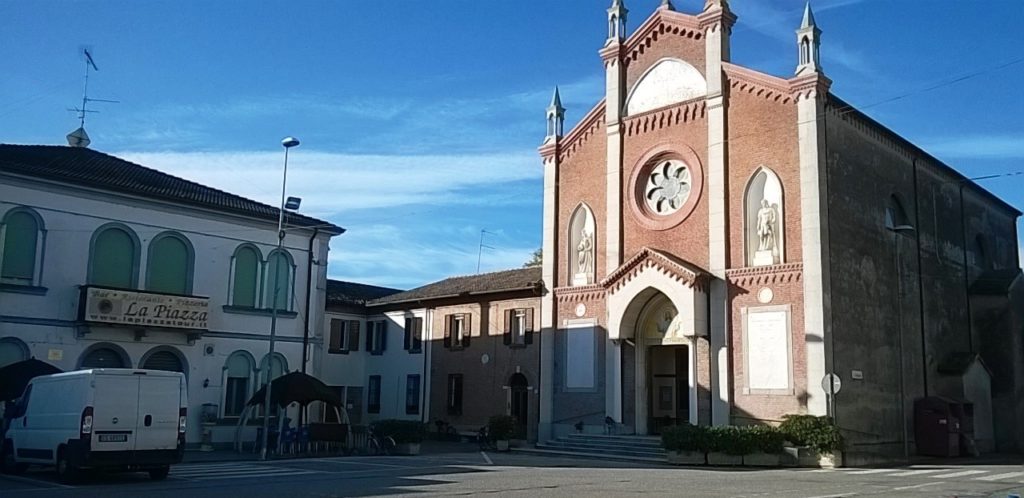


PORTE DEL DELTA (The doors of the Delta)– SERRAVALLE
The “Porta del Delta” is located precisely in the point where the Delta of the river starts, opposite the Punta di Santa Maria, in the floodplain area. It is a fully equipped tourist center, with a restaurant, private campsite, sporting facilities and river docking area for those boats that wish to stop to take a refreshing break.
ARCHEOLOGY
The storage of archeological material of Ro Ferrarese was launched in 2018. The building can be found in Piazza Umberto I number 16 and was created thanks to a cooperation between the District of Riva del Po and the Archeological Superintendence of Emilia Romagna.
The management of the storage has been assigned to the Gruppo Archeologico Ferrarese (GAF) that has been active since 2009 in the area of the “Unioni dei Comuni Terre e Fiumi” ( Union of the Districts of Land and Rivers). The activities of the Group during these past years has focused mainly on surface reconnaissance and has led to the discovery of ancient settlements of great archeological interest. Between 2010 and 2020 various trial excavations have been carried out and have brought back to light ceramics, building materials, metals, etc.
For more information: direzione.gaf@libero.it – telefono 346 3669501
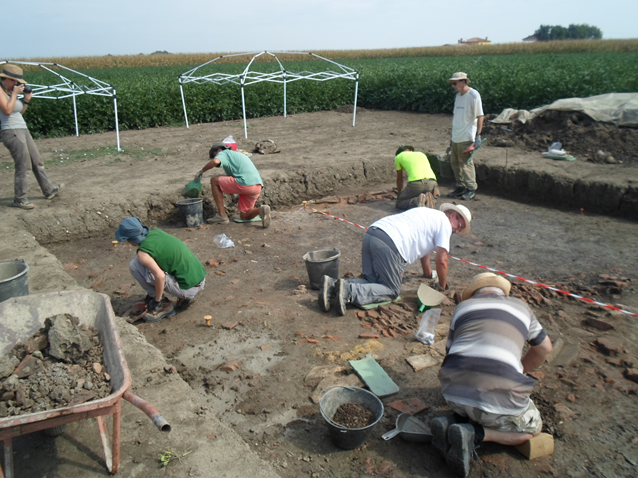
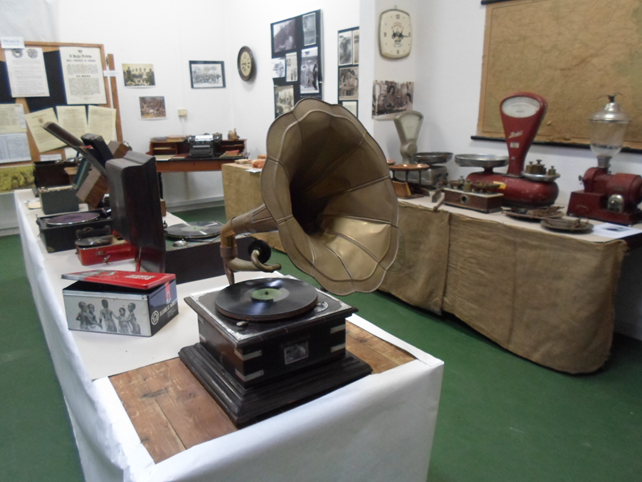
MUSEO ARTI E MESTIERI DELLE TERRE DEL MULINO (Arts and trade museum of the lands of the Mill)
Inaugurated in 2014 and positioned in Via Repubblica 6, the museum acts as a giant history book of past generations that have shaped this part of the Pianura and its great river. The everyday household and farming tools, the means of transport and leisure, draw a line of the evolution of the population , from wood chimneys to electricity ,work animals to thermal engines.
For more information: e-mail: 53gulliver@gmail.com – telefono 346 3669501
